Yesterday, about six o'clock in the afternoon, I drove about six kilometers to one of the meadows near the village of Shishan. I spent a few hours there searching for interesting details.
Today, in this post, I'm ready to show you what I collected through the collecting power of my camera equipped with a small, versatile macro lens that can be added or subtracted, depending on what is being photographed.
These are the Potentilla recta flowers.
I saw quite a few of them yesterday.
When the Potentilla recta flower loses its petals, it looks like a lovely little star. The photograph on the right was taken with the flash, the one on the left without it.
Here you can see a crab spider (Thomisidae family) with its prey. The scene was photographed on the Knautia integrifolia flower, and I used the flash.
This shot, taken a minute later, shows the same situation from a slightly different angle, and the spider is in a slightly different pose. The scientific name of the species is Thomisus onustus. Judging by the size, shape, and especially the pretty long two pairs of forelegs, I'll say this is a male spider.

Here you can see a Knautia integrifolia flower in the subdued ambient light at dusk. In the following photograph ...

... the fruit and the flower of the same plant are posing next to each other.
Illuminated by the flash or the more intense sunlight in the period between dawn and dusk, the colors appear different.
What looks like a single flower is actually an inflorescence made of many small flowers called florets.
The Knautia integrifolia flower shown in this photograph isn't fully developed yet.
This is one of the visually most striking, if not the visually most striking, flies that can be seen in my area. The scientific name of the species is Myopa dorsalis. It belongs to the Conopidae family. In the above photograph, the fly is resting on the Knautia integrifolia flower. In its adult stage, Myopa dorsalis feeds on nectar. Larvae live and develop as parasites inside the body of some bee and wasp species.
On the nearby flower of the same kind ...
... I had the oportunity to photograph another fly from the Conopidae family. The closely related Myopa hirsuta.
Just like in the case of Myopa dorsalis, the adult flies feed on nectar and visit a wide variety of flowers. The larvae parasitise mainly on bees from the genus Andrena in the Andrenidae family.
At some point, while I was observing the scene through the macro lens ...
... the fly started cleaning its head and forelegs, allowing me to get a few interesting poses for this set of six consecutive photographs.
In this shot, the fly's feeding apparatus, which is usually packaged and hidden in the lower part of the head, can be seen in all its impressive length.
About half an hour later, and forty or fifty meters further ...
... I came across an interesting scene in the midlle of the relatively large meadow.
A brand new Tettigonia viridissima adult just exited the nymphal exoskeleton. If you take a good look at all the details in this photograph, you may notice the shape and reduced size of the nymphal wings and compare them with the adult's wings that were slowly reaching their full size.
Tettigonia viridissima is a big insect, so I used the macro lens only for this photograph, which doesn't include the complete legs, wings, and antennae, and even here, the macro power of my lens is at minimum. Some insects are just too big for macro.
As the hemolymph, the insect equivalent of blood, gets pumped into the veins of the wings, they are slowly spread into their final shape. If you compare the three shots in this tryptich, you may notice the small differences in shape and size of the wings.
When these four photographs were taken, the wings were almost ready.
Molting of an insect is always an interesting scene to observe, and is also an easy one to photograph. Even the fastest and shiest species can't run, jump, or fly away during this process that makes them very vulnerable.
While taking the last few shots of this Tettigonia viridissima bushcricket, I noticed the icon on the display of my camera signaling that the battery is very low; It was time to change it, so I decided to walk back to my car parked by the side of the road.
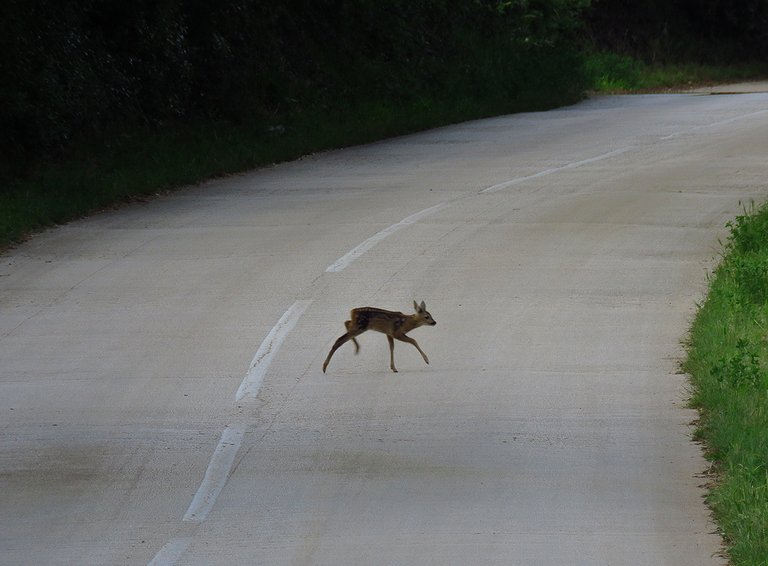
While digging through the backpack in search of spare batteries, I saw a young roe deer crossing the road. This was the last shot taken before changing the battery.
Here you can see the shrubs by the side of the road, not far from my car.
That's the place where I photographed this crane fly.
The scientific name of the species is Tipula lunata. In the following photograph ...
... you can see the same crane fly from a slightly different angle.
On the leaf of a blackberry shrub in the same roadside area ...
... I found a small spider resting in an interesting pose. One of its hind legs was stretched vertically and was holding a barely visible thread connected to the foliage about twenty or thirty centimeters above the spider. I'm not sure about the species, but I can confidently say that it belongs to the Araneidae family. I'm also kinda convinced that it is a juvenile spider that will grow considerably bigger. It could be a juvenile Agalenatea redii, for example.
This much bigger spider is a fully grown Araneus angulatus, another orb-weaving species from the Araneidae family. I found it on the large web built about twenty meters further along the dense, green wall of shrubby vegetation. The spider was eating some small insect, or a small fragment of a bigger insect caught in the web.

There wasn't much space between the web and the shrubs behind it, so getting this photograph, which shows the upper part of the spider's body, was far from being easy. Here you can see the markings and protuberances on the abdomen that make the identification much easier. Near the edge of the web ...
... I noticed a surprisingly photogenic remnant of one of the spider's recent meals. The wings and thorax of a green lacewing. These three shots were taken with the flash of my camera on. The following photograph ...

... shows the same scene in ambient light.
Here you can see a bush cricket nymph posing on a blackberry leaf. The name of the species is Leptophyes punctatissima.
This is the Idaea degeneraria, a moth from the Geometridae family. I used the flash in this shot.
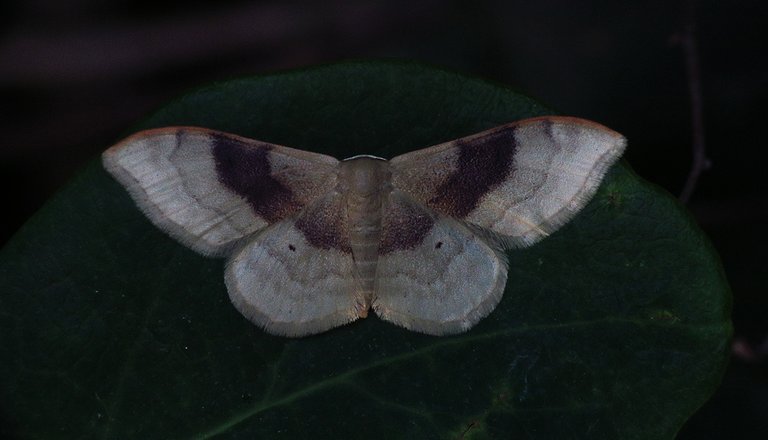
Here you can see the same moth photographed in low ambient light at dusk.
This caterpillar also belongs to the Geometridae family, but ...
... but in this case, I can't tell you what species exactly this is.
Not only are there quite a few very similar-looking Geometridae caterpillars present in the area, but also, in many species, the markings and colors of the larvae can vary. All that can make the identification quite confusing.
AND THAT'S ALL I PREPARED FOR TODAY. THE POST ENDS HERE.
AS ALWAYS ON HIVE, THE PHOTOGRAPHS ARE MY WORK.
The following links will take you to the sites with more information about some of the protagonists of today's post. I found some stuff about them there.
https://en.wikipedia.org/wiki/Potentilla_recta
https://en.wikipedia.org/wiki/Thomisus_onustus
https://identify.plantnet.org/k-world-flora/species/Knautia%20integrifolia%20(Honck.%20ex%20L.)%20Bertol./data
https://en.wikipedia.org/wiki/Myopa_dorsalis
https://www.flickr.com/photos/63075200@N07/albums/72157679771875731/with/49081221243
https://en.wikipedia.org/wiki/Tettigonia_viridissima
https://www.naturespot.org/species/tipula-lunata
https://www.inaturalist.org/taxa/121769-Araneus-angulatus
https://www.naturespot.org/species/speckled-bush-cricket
https://en.wikipedia.org/wiki/Idaea_degeneraria
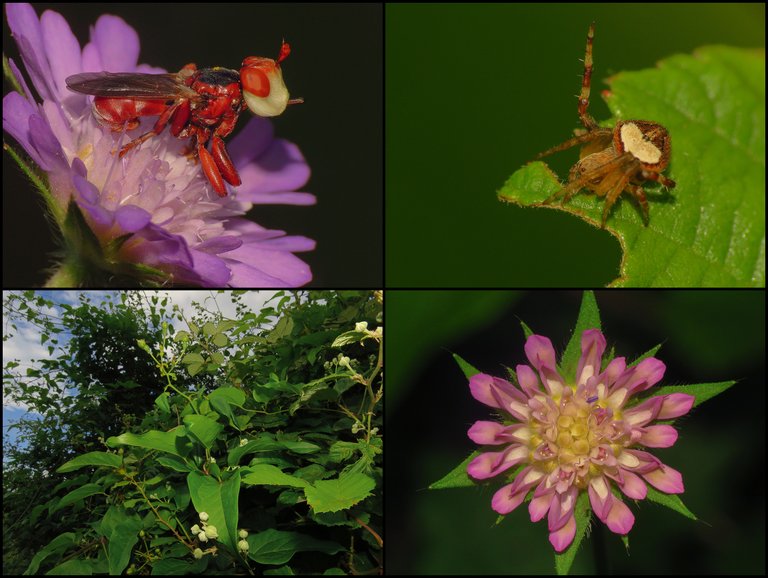



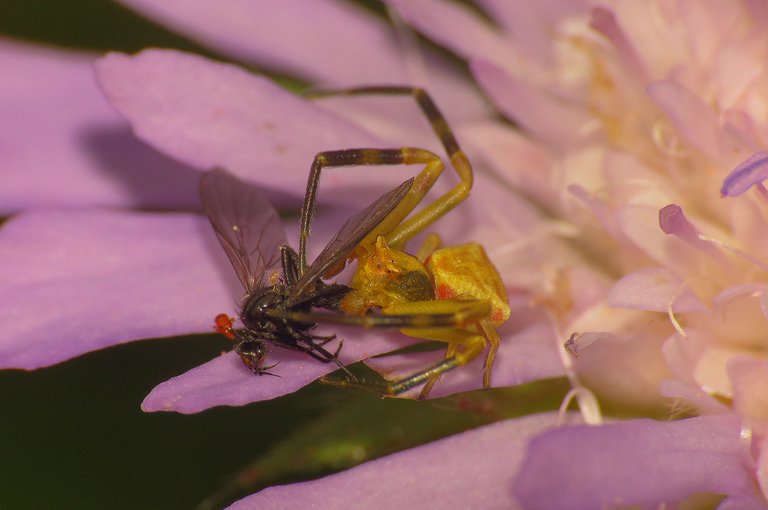
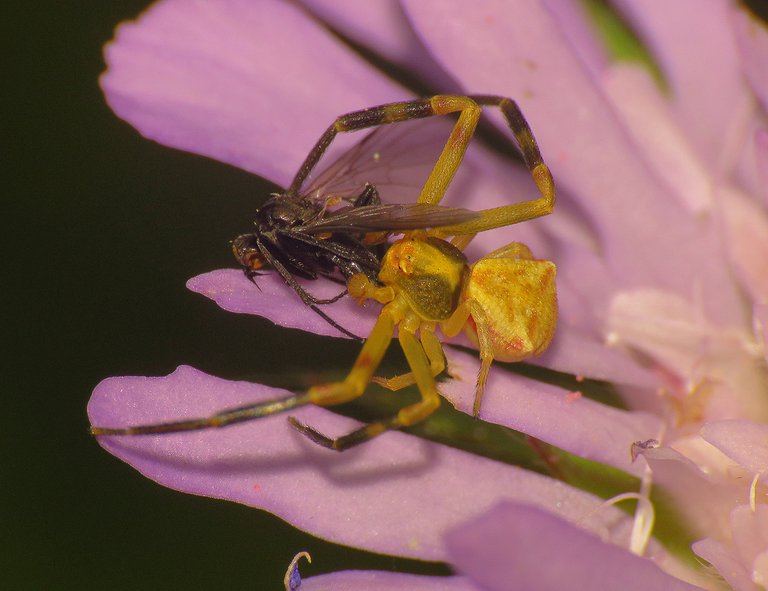
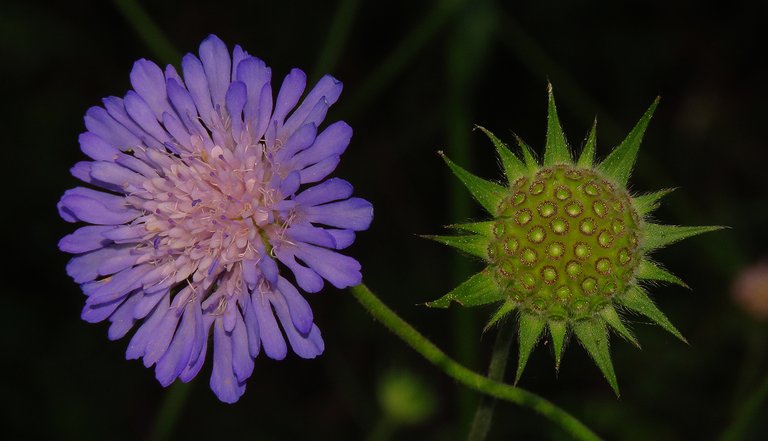


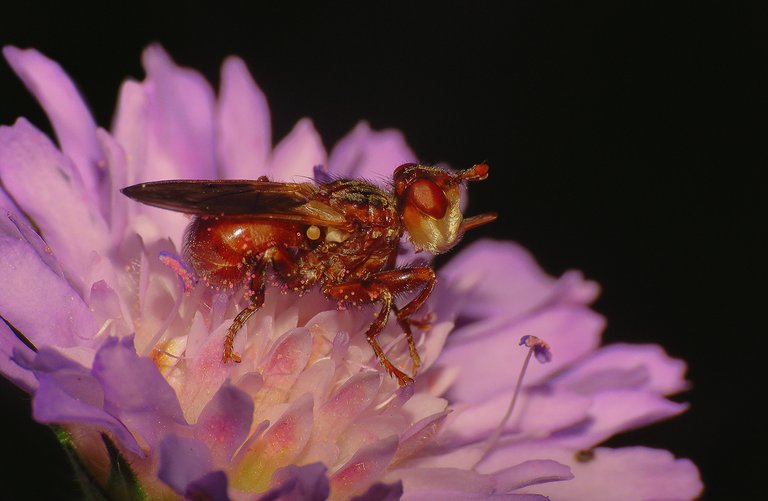
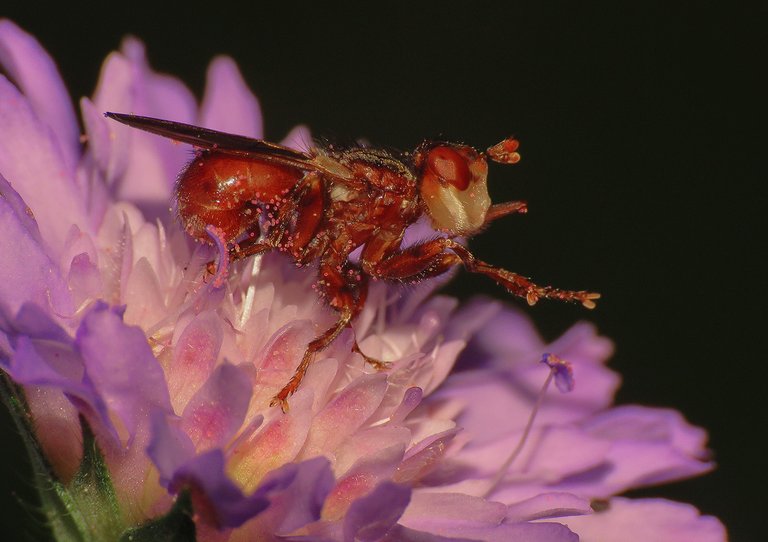
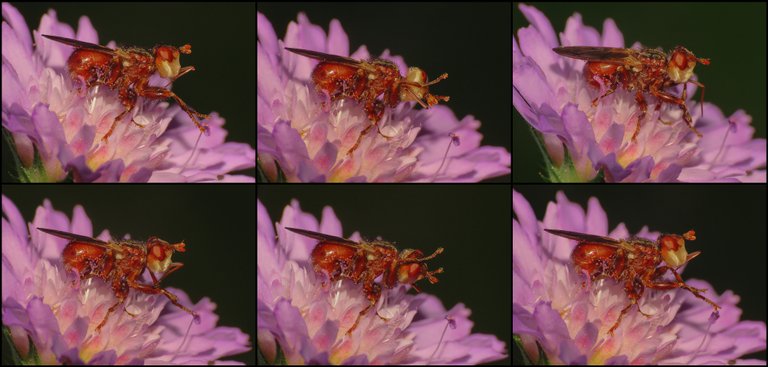



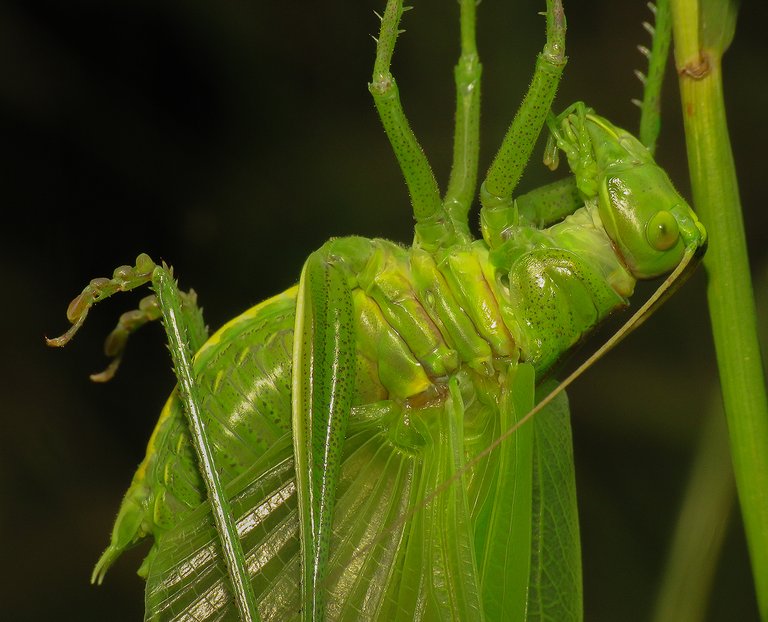


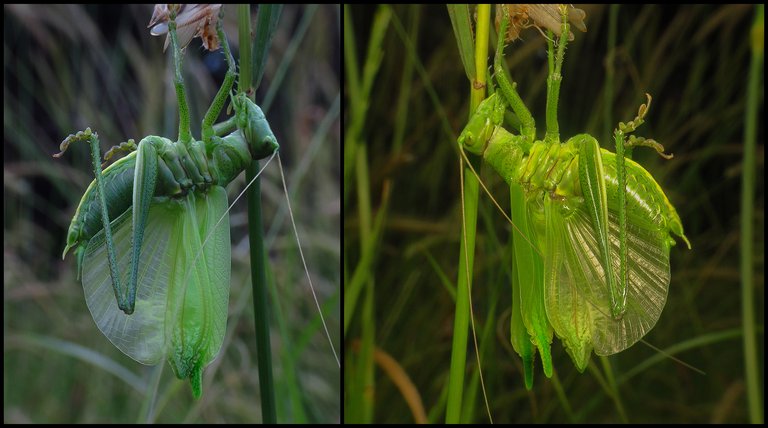





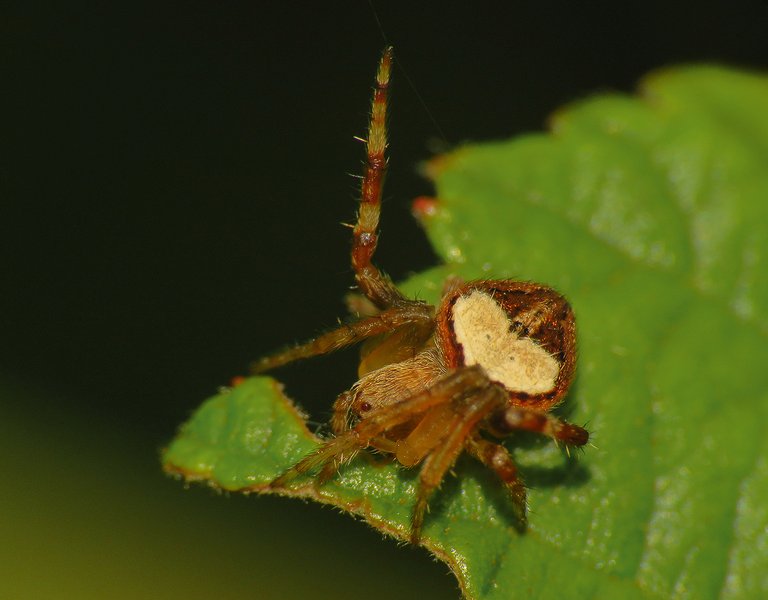


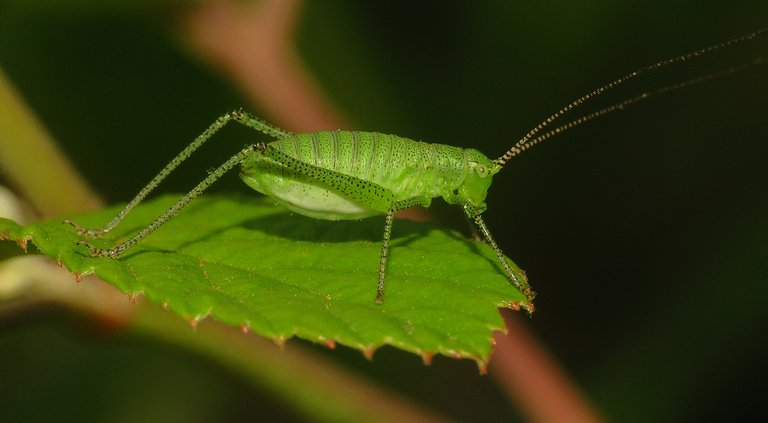




😀 This would be treated as a gourmet post on Facebook!
The Hemolymph looks like a giant grasshopper.
I'd be scared if I see that in my garden😂😂😂
Lovely different flowers and such a striking color combination for a fly.
😀
There is a way your pictures look but I haven’t found the perfect word for it
They always look enticing
Even the best photographers in the world will hail you for these pictures
Thank you. 🙂 That's a big compliment. Glad you find this macro stuff interesting.
Amazing macro photography display @borjan friend!
They are all beautifully photographed, more like they were put on the spotlight and they delivered. Well done friend.
🙂
Those Myopa flies seem to have the most personality ... the first one seems to be smiling in its spring dining room!
True 🙂 It looks a bit like a clown.
Wooow, 6Km drive is quite a dedication in doing what you love. I love the picture of the fly, it’s the most colorful I’ve seen so far, and capturing it well it’s commendable as flies could easily fly away.
Thank you so much @borjan. I am super grateful for your support 🙏
Crazy what is all happening around us, we just need to take the time and want to see it.
I really adore the color in this picture, would call it magical blue:
Flowers and insects in different colors. The tones used makes them more stunning. The angles are perfect! !LUV
The beauty of each flower and insect is very beautiful and attractive which I like to see. I am looking forward to seeing more such beautiful pictures in the coming days. Thank you friend for sharing the beautiful pictures.
The greatest joy comes when we see such rare flowers and we take pictures of them and save them for the rest of our lives. In the same way, I also try to keep all the pictures with me, either in flash or in my mobile.
Your pictures are so beautiful
Your photography skills amazes me always
I really like the photos you show. How the insects look so clear and sharp :-)
🙂
My pleasure :-)
#hive #posh
Very cool your photo especially black color that black background is really very good photo.
I must say that this is beautiful captures. Also, the detail in the macro shots is stunning, especially the crab spider and the Myopa dorsalis. This shows the beauty embedded in Nature.
Very amazing photos. I saw a grasshopper doing a great stunt. Interesting :)
Wow you got many of them different creatures is all about nature and we are close to them
The photos are really colorful and beautiful as always and thanks for sharing it @borjan.
Congratulations @borjan! You have completed the following achievement on the Hive blockchain And have been rewarded with New badge(s)
Your next target is to reach 26500 replies.
You can view your badges on your board and compare yourself to others in the Ranking
If you no longer want to receive notifications, reply to this comment with the word
STOPCheck out our last posts:
Your post has been curated and upvoted by Ecency!
Stay on track and keep up the good work!
Join us on the Ecency Discord
OMG!...Another impressive macro stuff @borjan friend, but this creature is really fantastic! 😍📷
!discovery 30
!PIZZA
Yes. 🙂 This fly is a very photogenic insect. It looks a bit like a clown. An insect version of a clown.
Glad you find the post interesting. 🙂 I'm having the time of my life this spring searching for interesting details in nature around me.
This post was shared and voted inside the discord by the curators team of discovery-it
Join our Community and follow our Curation Trail
Discovery-it is also a Witness, vote for us here
Delegate to us for passive income. Check our 80% fee-back Program
$PIZZA slices delivered:
@jlinaresp(10/15) tipped @borjan
Come get MOONed!
This post is absolutely stunning! The Myopa fly looks so vivid and full of character—it really does resemble a tiny red clown enjoying spring. 😊 The spider with the white mark is equally fascinating. And those flower shots are pure beauty—nature’s design at its best. Thank you for sharing this little world through your lens! 🙌📷
Thank you. 🙂 Glad you find this macro stuff interesting.
You're welcome! 😊 Macro photography truly opens up a fascinating tiny world. Looking forward to seeing more of your amazing shots!
Thanks a lot for your support and the upvote! 😊 I truly appreciate it. Your encouragement means a lot to me!
Your macro shots are absolutely stunning! I’m amazed by the clarity and colors, especially the spider with its prey and the beautiful flowers.
Thank you. 🙂 Glad you find this macro stuff interesting. I'm having a lot of fun exploring the small details in nature.
I enjoyed seeing those captures that focus on the tiny details of nature. Through your lens, those tiny details that most of us miss become something truly special.😊
I found a lot of interesting things in your post, the photos are simply fantastic, your macro photos are incredible. Once again I am convinced how diverse and beautiful nature is in the world.
🙂